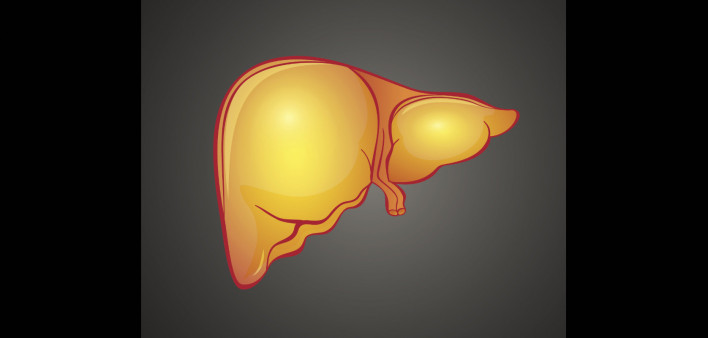Egrifta (tesamorelin), a growth hormone–releasing factor analogue, turns off genes that promote inflammation and scar tissue buildup in people living with HIV who have non-alcoholic fatty liver disease (NAFLD), thereby improving their liver health and potentially reducing the risk of liver cancer, according to a recent study.
“These data demonstrate for the first time how tesamorelin reduces the accumulation of liver fat and improves hepatic gene expression that reflect an overall return toward liver health in people living with HIV-associated NAFLD/NASH,” Steven Grinspoon, MD, of Massachusetts General Hospital, said in a press release from Theratechnologies.
NAFLD and its more severe form, non-alcoholic steatohepatitis (NASH), are growing causes of advanced liver disease. The accumulation of fat in the liver triggers inflammation, which over time can lead to liver fibrosis (buildup of scar tissue), cirrhosis and liver cancer. NAFLD is common in people with HIV, and it appears to progress more rapidly in this population. With no effective medical therapies currently approved, management relies on lifestyle changes such as weight loss and exercise.
Egrifta, an injectable drug self-administered once daily, mimics a natural hormone produced in the brain that triggers the release of growth hormone, which both builds muscle and breaks down fat. It was approved in 2010 as a treatment to reduce excess belly fat in HIV-positive people with lipodystrophy.
Research has shown that Egrifta can also reduce liver fat in HIV-positive people with NAFLD, though it is not yet approved for this indication. In a Phase II trial by Grinspoon’s team published in 2019, Egrifta decreased fat accumulation in the liver and prevented fibrosis progression compared with a placebo in people with HIV-associated NAFLD.
Now, a sub-study of that trial has shed light on how the drug reduces liver fat and fibrosis. As described in JCI Insight, Grinspoon and colleagues evaluated the effect of Egrifta on gene pathways in liver biopsy samples from HIV-positive people with NAFLD who participated in the study.
Comparing paired liver biopsy specimens taken at the beginning of the trial and after one year of treatment, the researchers found that Egrifta increased gene expression related to oxidative phosphorylation, the process by which nutrients are broken down to provide energy in cellular power plants known as mitochondria.
“Mitochondrial impairment may promote hepatic fat accumulation and generation of toxic lipid metabolites, increasing oxidative stress, cell death, inflammation and fibrosis, which are key events in NAFLD progression,” the study authors wrote.
In addition, Egrifta led to a decrease in the expression of genes related to inflammation, tissue repair and cell division. These changes in gene expression were correlated with improved fibrosis and a decrease in biomarkers related to inflammation.
Excessive cell growth as the liver attempts to repair tissue damage is responsible for scar tissue buildup and can trigger hepatocellular carcinoma (HCC), the most common type of liver cancer. The sub-study showed that Egrifta up-regulated genes associated with favorable HCC prognosis while down-regulating those linked to poor outcomes.
“Our findings inform our knowledge of the biology of growth hormone action on the liver and provide a mechanistic basis for the observed clinical effects of tesamorelin on the liver,” the study authors concluded.
“Given that the HIV population is at high risk of NAFLD and increased fibrosis progression rates, there is a critical need for dedicated studies among this patient group,” they wrote. “Our findings also may yield insights for other populations with NAFLD, and thus provide a strong rationale for additional studies.”
Click here to read the study abstract.
Click here to learn more about fatty liver disease.
Click here to learn more about HIV-related lipodystrophy.







3 Comments
3 Comments